TRASHY TUESDAY: MORE CLEVELAND WESTERN COVERS
I recently acquired another batch of old Cleveland Westerns, which range from the 1950s through to the 1990s.
Cleveland Publishing was established in 1953 and continued publishing soft cover digests, primarily westerns, up until December 2018. Cleveland published in a range of different genres, including romance, spy fiction and the Larry Kent crime series, but are probably best known for their westerns, which were a staple in Australian news agencies well into recent years. At its peak Cleveland had several different western series; including Sierra Western, High Brand Western, Bighorn Western and Winchester Western, to name a few. They produced around 18 different westerns each month and printed up to 50,000 copies of each book.
The oldest of the recent batch I acquired was Big Man (above) by Shad Denver. Denver was one of several pseudonyms used by Des R. Dunn, who wrote over four hundred novels and novellas, mainly in the western and crime genres. Big Man came out under Cleveland’s Chisholm Western series and would seem to have been released in the early 1960s, based on the price and the number. Although unsigned, it is likely that the cover was done by the famous Australian artist Stanley Pitt, who along with Walter Stackpool did most of the early covers for Cleveland. Typical of Pitt, and Stackpool, it is a nice clean, clear cover with a tough looking, clean shaven gunfighter. It is also in keeping with the tame nature of the Cleveland covers during this period, which eschewed bloody violence and the suggestion of sex.
I do like the clever positioning of the Chisholm Western Brand and number.
Western cover artists were never backwards in utilising uncredited images of famous western actors in their art work, although the unidentified artist of the cover for Ben Taggart’s No Law At Sundown seems particularly blatant in using iconic images from two well known westerns. At the top is the famous scene from The Wild Bunch, featuring poorly drawn images of Ben Johnson, Warren Oates, William Holden and Ernest Borgnine, while the bottom image is Gary Cooper from The Gunfighter (see photo below).
No Law At Sundown is #326 from Cleveland’s Arizona Western series and probably came out on the early 1970s.
Cole Shelton was a pseudonym used by prolific author Roger Norris-Green. Norris-Green is probably best known for his Shane and Jonah series, which was commissioned by Cleveland in the mid-1960s to compensate for the lost of the very popular Larry and Stretch books by Marshall Grover (Leonard F Meares) to rival publisher Horwitz. Outlaw Gold (early 1970s) falls outside that series, but probably does not vary much in style from them.
By the late 1960s the Spanish syndicated art agency Nova Bossa started to provide a lot of covers for Cleveland, mainly the Larry Kent books, but also some of the westerns. Using Spanish artists such as Rafael Cortiella and Enrich Torres, Nova Bossa provided covers which were usually more violent and sexualised in their approach. The above cover by Spanish artist Jordi Bosch Penalva, was fairly typical of the generic artwork provided by Nova Bossa, which tended to feature a small circular vignette of an usually semi-naked woman set against some action scene. They were much different to the tamer, more respectful covers of the 1950s and early 1960s.
Gold Of The Padres (Cleveland, Bison Western #550) by the pseudonymous Wes Yancey, dates from the same period as Outlaw Gold. Although the artist is not identified, it is very much in the Nova Bossa mode.
On The Skids (Cleveland, Bison Westerns #1119) by Emerson Dodge probably dates from the 1990s, based on the number and the price. Emerson Dodge was one of the pseudonyms used by prolific author Paul Wheelahan who wrote nearly two hundred westerns for Cleveland Publishing.
The striking cover is by Spanish artist Salvador Faba (1936), who is probably best known for his horror and western art, including the German covers for Vampira. The 93 at the end of his signature, may indicate the date of the drawing. It is a great cover that really catches the eye and instantly suggests the improbable violence of the Spaghetti western.
Note: most authorities date the term ‘on the skids’ to early 1900s, which would be after the period in which On The Skids takes place.
Finally, Takin’ It Back To Shiloh by Brett Waring (Cleveland, Bison Westerns #1179) dates to around the same time as On The Skids.
The top of the cover of the digest that I have is badly damaged, so I have just lifted the artwork. The illustration is by Prieto Muriana, who was another prolific Spanish artist and frequent provider of covers for Cleveland Westerns and the Larry Kent books. It is a more classic western image, than most of the Spanish covers and would not have been out of place on a Louis Lamour western from the 1960s.
Here are a couple of earlier articles on Cleveland Westerns and covers:
https://murdermayhemandlongdogs.com/trashy-tuesday-a-very-early-cleveland-western/

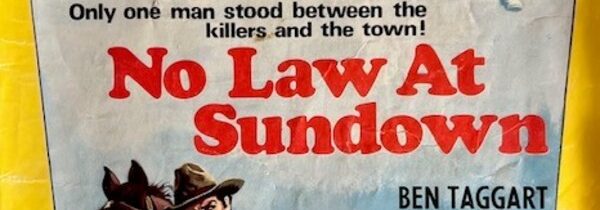

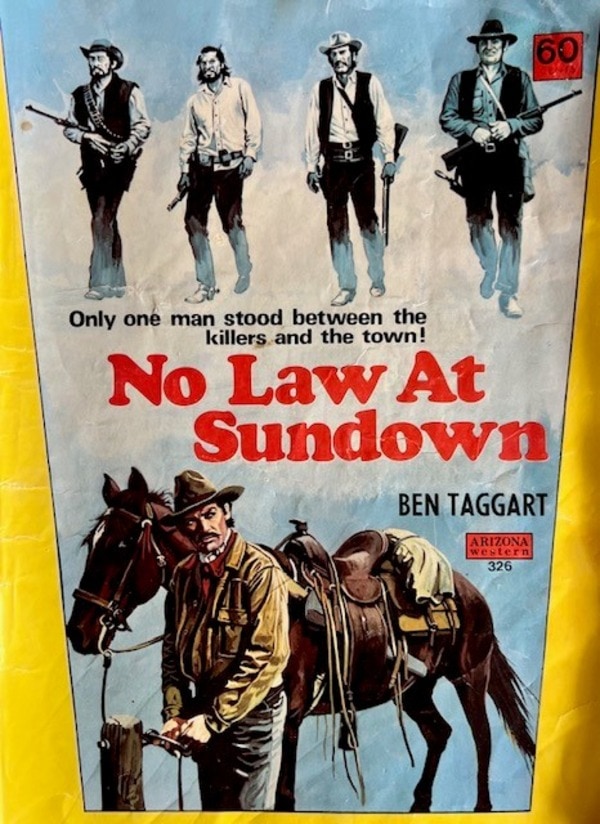

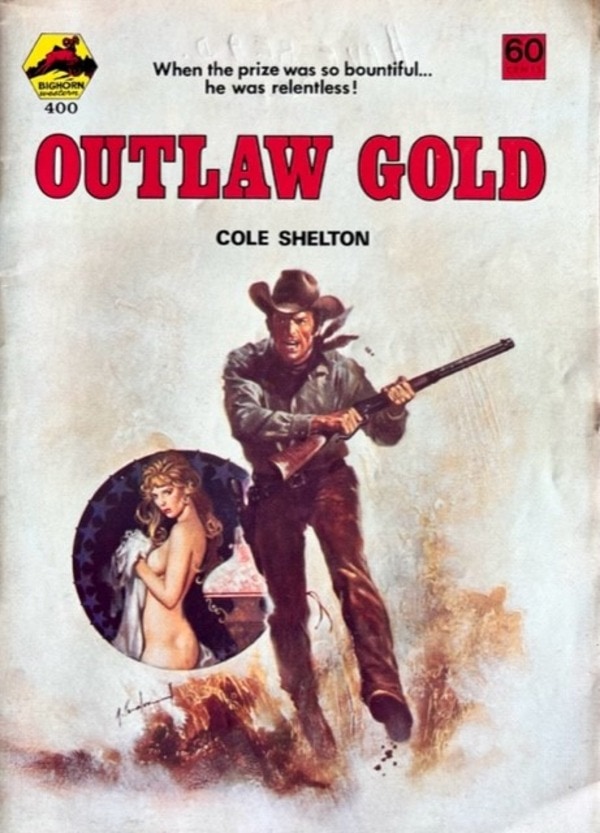

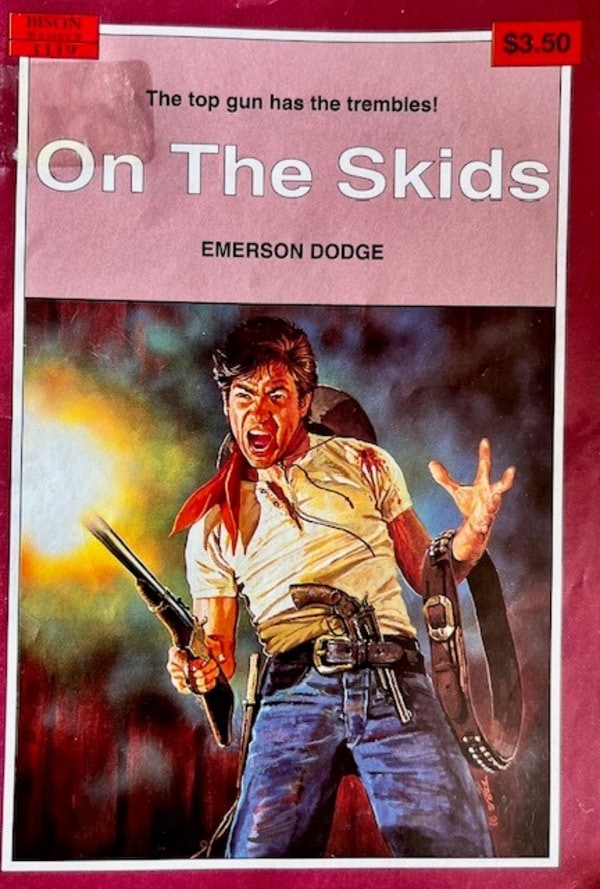
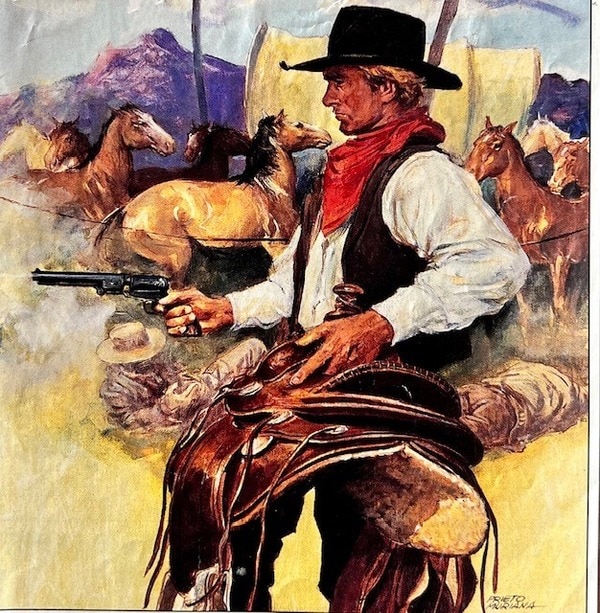
Have you run out of storage space yet, Jeff? I never really read the pulp westerns, but I remember seeing them in my aunt’s secondhand bookshop in the late 1960s and early 1970s.
Space is becoming a real problem 🙂 I read some of the Clevelands when I was a kid, but not more recently. I am just fascinated by the covers